Elastic Interface has a new 3D printed chamois and I put it to the test. In many ways my attraction to this tech isn’t a surprise. Over the years I’ve become a big fan of Elastic Interface products. The brand isn’t the only high quality option on the market but EI tags always mean you are getting a decent chamois. Now the brand has a new product called N3X technology and it’s 3D printed. I took it out to see how it worked.
There aren’t many bib shorts available for purchase that use it but I pulled in two very different choices. I looked at each one in terms of performance as it related to the 3D printed chamois but that’s not where I stopped.
More and more, I feel like cyclists are trying to pretend that style doesn’t matter. I’m not one of them. When I head out on a bike, my legs are smooth and my socks are tall. I love wearing the roadie uniform and I have no problem admitting that I want my kit to look great. Style is important.
From there, I then turned my eye towards performance. When I start riding, my route often represents 6-8 hours of riding, and 12-24 hours isn’t all that unusual. I need bib shorts that feel as good as they look and I looked at more than just the chamois.
Here’s how two pairs of bib shorts using a 3D printed chamois looked and felt to use.
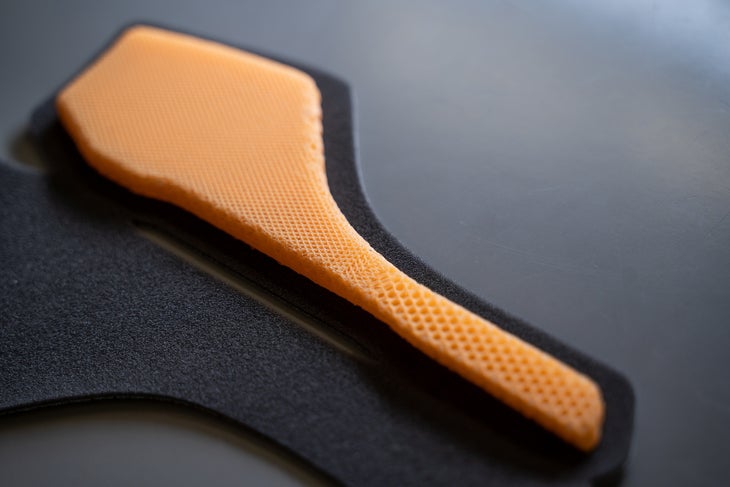
Elastic Interface N3X Technology 3D printed chamois
Before we get into the specific bibs, let’s start with the chamois tech. If you feel like you’ve heard of this before, you probably have. Elastic Interface first introduced the technology two years ago at Eurobike 2022. The reason that it’s come up again is that Elastic Interface isn’t a clothing company. The brand doesn’t make bib shorts and while the chamois came to market in 2022, it still needed time for clothing brands to learn about it, purchase the product, and finally to design and produce bib shorts using it. Products are only now getting into consumer hands and there are still not many out there.
Despite that lead time, those that are available now, and those that come in the future will all use a variation on the same chamois. Like a 3D printed saddle, what a 3D printed chamois promises is a precision design with the ability to provide a level of localization otherwise impossible. From what I’ve seen, that means different brands will make different choices but there are also commonalities.
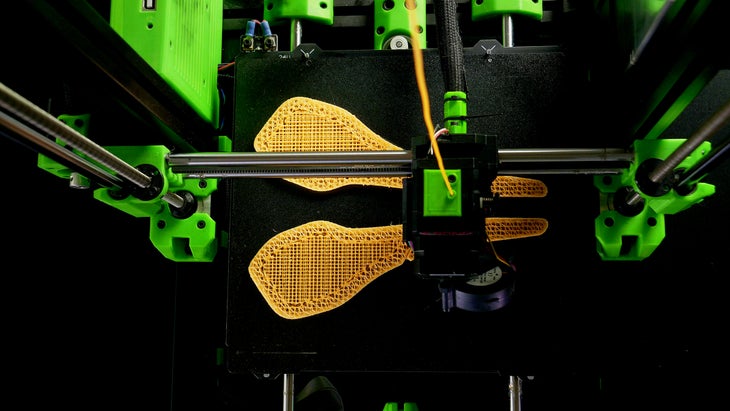
Density and exactly where that density is seems to be a choice that brands are able to control. That’s not so different from a standard chamois but what the 3D printed chamois offers is even more customization. This level of precision would be difficult with traditional techniques but even if it came to market, it would mean the use of several pieces of material. 3D printing simplifies that.
Elastic Interface also points out that there is an inherent sustainability angle to 3D printing. Almost all sports fabrics are plastics. 3D printing might not shift away from plastics but it does mean there’s reduced waste. EI states that “the N3X technology for paddings allows us to print only what we need where we need it” and that’s a win even if it’s not a complete and perfect solution.
Another inherent advantage that Elastic Interface points to is breathability. As with 3D printed saddles, a 3D printed chamois is an open lattice structure. It doesn’t absorb liquid and air is free to move through the structure to aid in quick drying of the surrounding materials.
Consumers can’t directly purchase a chamois from Elastic Interface but if you want more details on the technology you can find it on the Elastic Interface website.
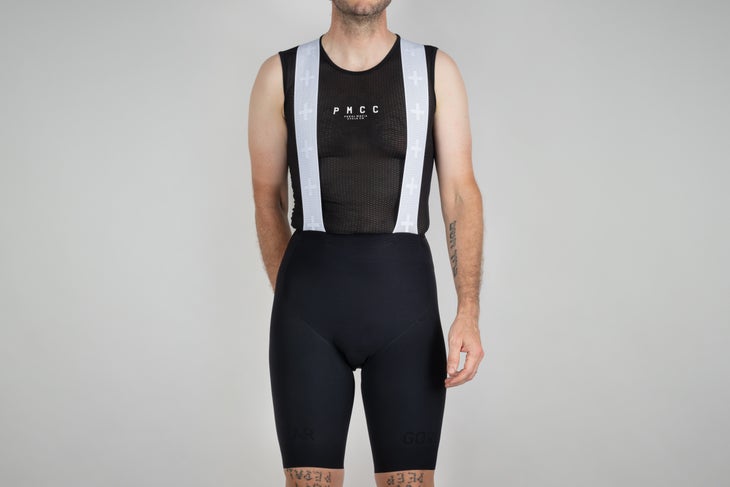
Gorewear Ultimate Bib Shorts+
The first bib shorts featuring the 3D printed chamois I had a chance to try were the Gore Ultimate Bib Shorts+. Right away I could tell that what I had in my hands was something different. If I’m honest, I haven’t always been a fan of Gorewear bib shorts. The last time I seriously looked at a pair was in late 2021 when I tested the Gorewear Long Distance Bib Shorts+.
I took the Gorewear Long Distance Bib Shorts+ up to the top of Mt Hood just like I did this year with the Scope Artech 4 Wheels. That time though, I took an even longer route and the bibs did not work as advertised. The whole route was close to 120 miles but as I made my way down the mountain with 40 or 50 miles left, I was already sore. I was standing as often as possible to give myself a bit of a break and by the end of the day, I felt bruised. I also wasn’t in love with the style that featured big angle seams through the thighs and a short front.
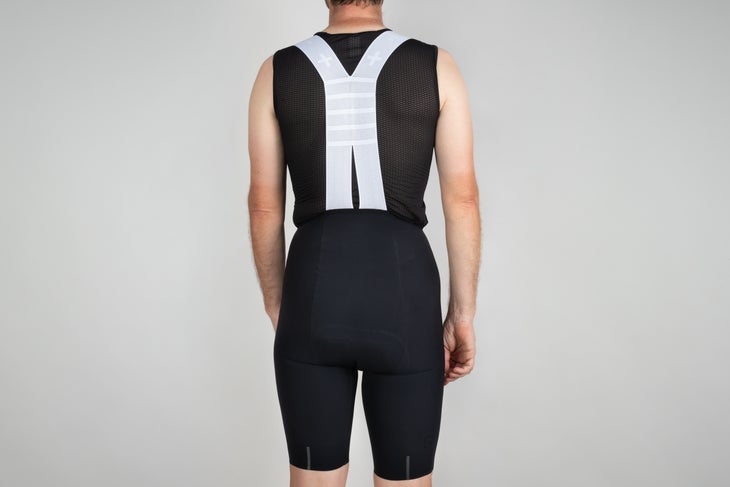
The Gore Ultimate Bib Shorts+ are completely different. These are the best bib shorts I’ve ever worn from Gorewear and the chamois is only a piece of that. The seams through the thigh are gone and replaced with a design that uses only a single vertical seam up the rear of the leg plus a panel through the center of the shorts. There’s still a wide, codpiece style front panel but now it comes up much higher with a seamless switch in the knit that reduces the compression as it rises.
Then there’s the Elastic Interface N3X 3D printed chamois. Like a traditional chamois insert there’s still an outer layer of foam and an inner face fabric. In the center though, you won’t find any foam but instead a single 3D printed pad. It’s dense with a tight weave in the rear and, like the woven fabric Gorewear uses, it seamlessly shifts to a more open front that’s softer on your pubic bones. Gorewear doesn’t list the exact thickness but the brand is clearly favoring a thinner, denser, design.
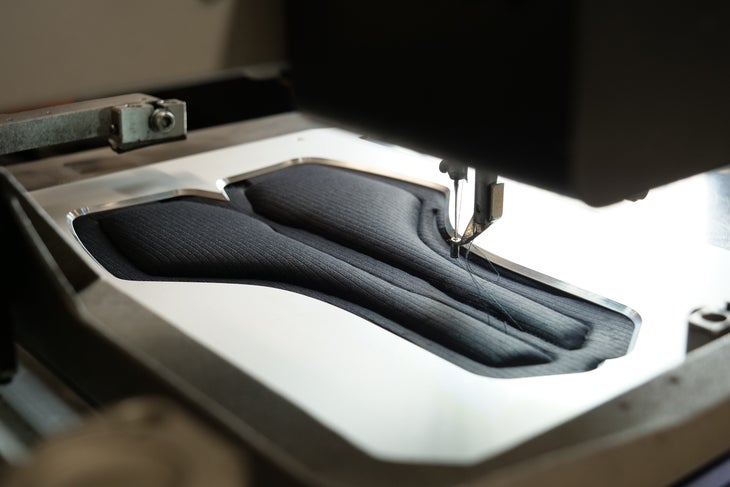
As a package, Gorewear knocked it out of the park with the Ultimate Bib Shorts+. The chamois lasts all day without becoming a pain in the… and the rest of the fabric does a good job keeping up. I’m a big fan of the more minimal grip material used at the end of the legs and the knit fabric looks as good as it feels. Given the option the only change I’d make is actually to bring the front down a bit. I know I praised that it’s higher but it’s gone just a touch too far.
For more details and purchase check out the Gorewear website.
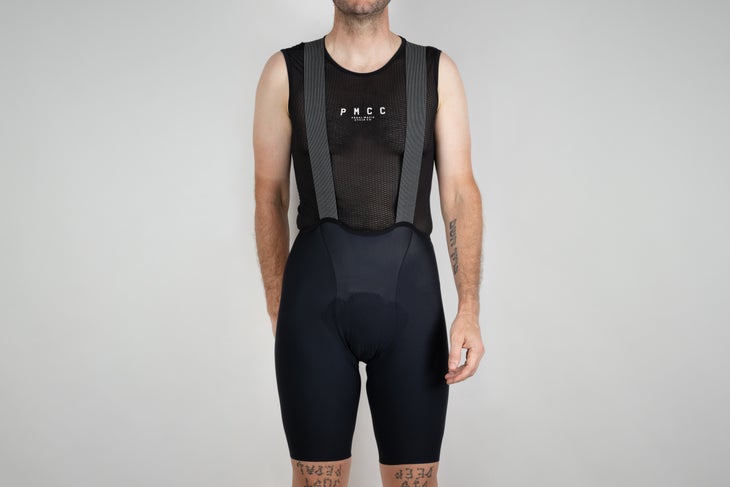
Rubber N’ Road CONTROL 3D Bib Shorts
The Gorewear Ultimate Bib Shorts+ might be the best Gorewear bib shorts I’ve ever used but what does that mean? I’ll be more specific and say it means that they are among the best I can remember using overall but these Rubber N’ Road CONTROL 3D Bib Shorts are on another level. These are the best bib shorts I’ve ever used and the 3D printed chamois is only part of that.
Really the 3D printed chamois isn’t even the most important part of these but it is worth mentioning and not just because that’s the point of the article. Rubber N’ Road uses a different version of the Elastic Interface 3D printed chamois called Endurance Sirio N3X.
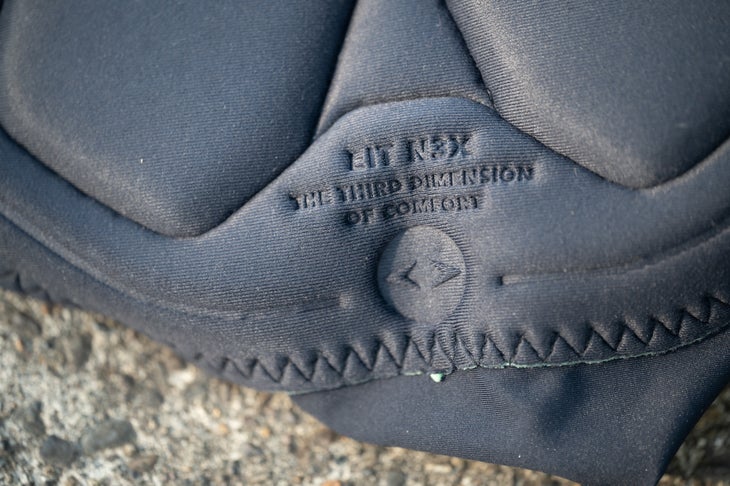
The design is different in just about every way from what Gorewear is using. The top uses a combination of two fabrics, Eco Graphene and Eco X-Tire fabrics. Both are Polyamide which is commonly known as Nylon and are 70 percent and 80 percent recycled. There’s also a low density foam used both in the top layer and as a separate layer below the 3D printed insert. In the middle is the 3D printed chamois and unlike the Gorewear piece it’s two pieces, front and rear, with a seam between them.
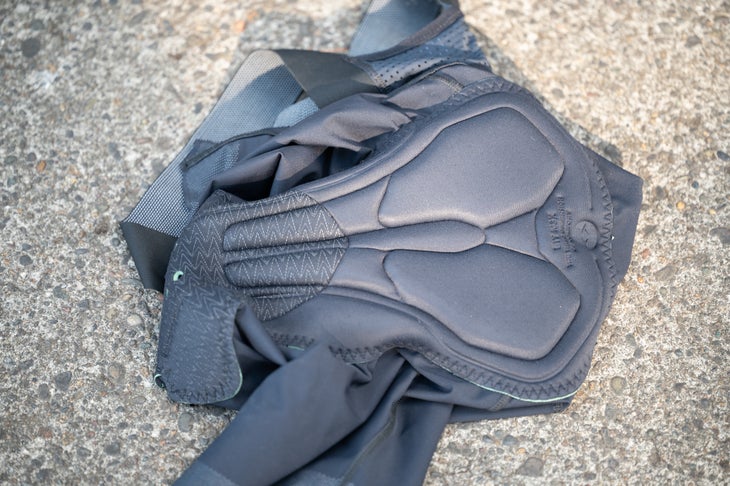
As a unit the Sirio design is much softer and thicker than the Gorewear chamois. The front area is 4mm before switching to 14 mm at the front part of the pad where the insert is. The final section, at the rear, is 15.5 mm and Elastic Interface considers it usable for both road and gravel.
As much as I like this chamois design, it’s not what truly elevates the Rubber’n Road design. If you saw that price and balked automatically, it costs that much because it’s handmade in NY City. The products Rubber’n Road makes are more like something you’d get out of an old school fashion house in New York City than modern performance sportswear.
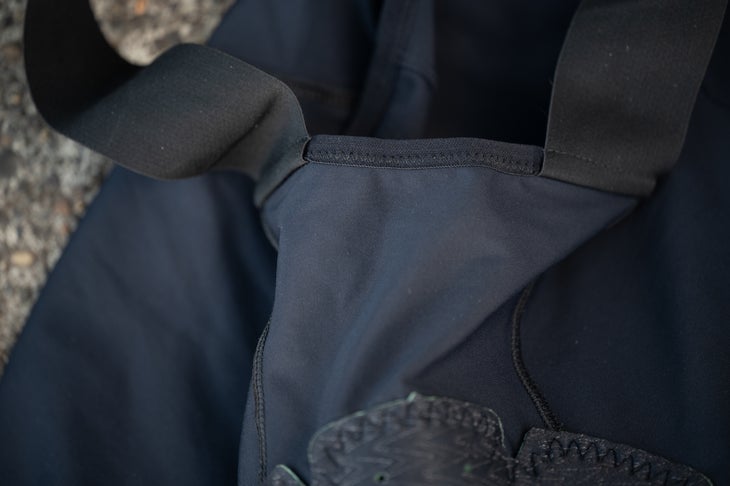
Instead of performance carrying the story, it’s fit and style.That’s not to say they don’t perform, just that performance is the backstop rather than the end of the story. The rest of the story fills out with dense, high-quality fabrics that have just the right amount of compression plus a perfect fit.
I wear a men’s size small but in some brands each time I start to pull them up, I wonder if I actually wear size small. The Rubber N’ Road CONTROL 3D Bib Shorts aren’t like that. They pull on without a struggle and once on there’s compression without feeling tight. The waist line is fairly straight but it’s high enough to fall in just the right spot for both comfort and visual appeal.
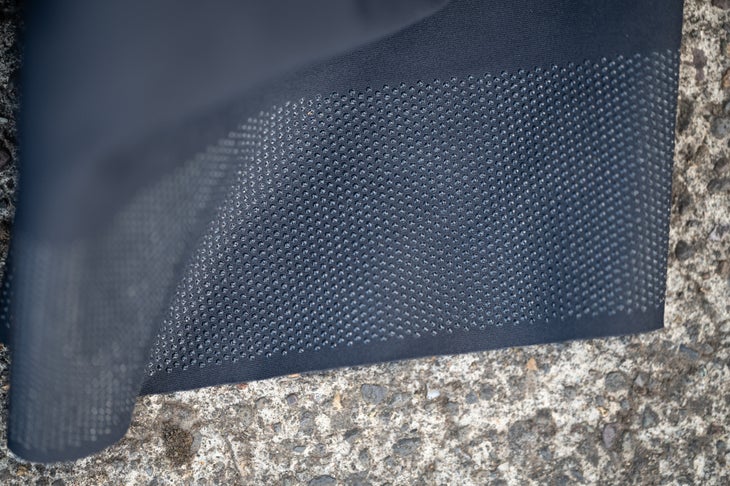
I’m gushing about these because they are that good. The only critique I’d give is that there’s a bit more grip at the end of the legs than I like. Castelli brought the Free Aero RC bibs to market with clever fabric choices and no need for silicone grip. The advantage is they are easier to get on and easier to get in the right spot. It’s such an innovative design that more and more I wish other brands with perfect compression would follow that design idea.
For more details and purchase check out the Rubber N’ Road website.
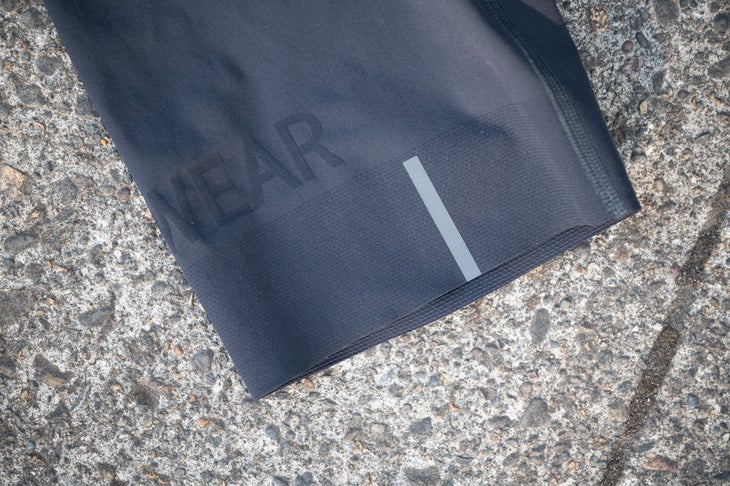
Conclusion
I’m not privy to the B2B price structure of Elastic Interface but it’s clear to me that the N3X 3D printed chamois is a premium product in the brand’s portfolio. The two bibs I had a chance to test plus X-Bionic COREFUSION Compression bib shorts are the only products on the market that use it and none of them are cheap. The least expensive option is the Gorewear Ultimate Bib Shorts+ and they are commanding a $100 premium over other Gorewear products. That leaves a question of value, is it there?
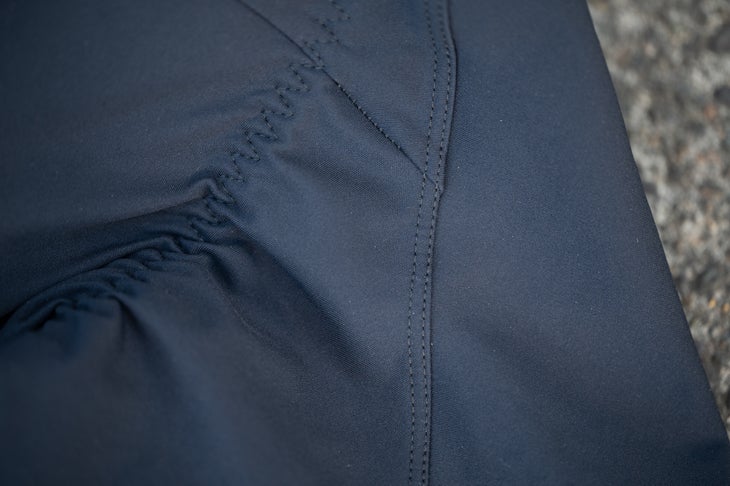
What I found was, perhaps unsurprisingly, that a good chamois is just one piece of what makes a good bib short. Rubber N’ Road makes the best bib short I’ve ever worn but it’s not because of the 3D printed chamois. The CONTROL 3D bib shorts are good because there’s a care taken with the fabric and cut that’s unusual. The Gorewear Ultimate Bib Shorts+ are also good because the brand is using a better pattern than previous bib shorts. An Elastic Interface 3D printed chamois only adds to the overall.
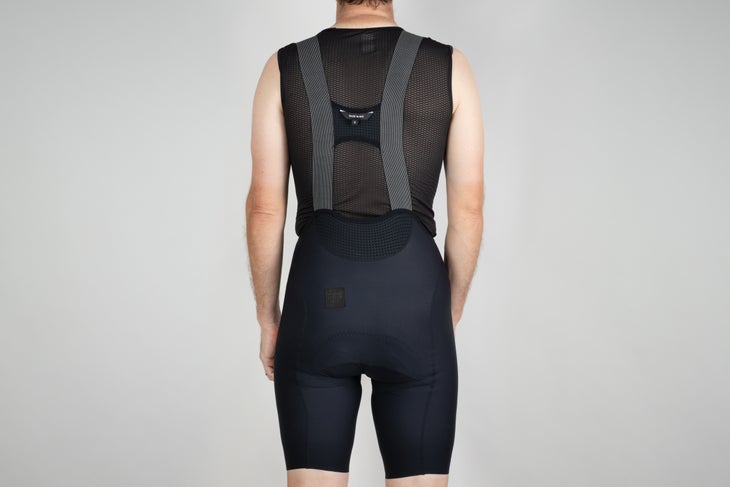
The chamois does bring something unusual though. What I really like about it is that it never fully compresses. I don’t care that it’s more breathable, I care that no matter how long I ride it will always protect my sit bones.
It’s worth mentioning that there is one other chamois that does the same without 3D printing. I already mentioned the Castelli Free Aero RC above but that bib short is on my mind because the chamois performs similarly. Castelli does it with a small spot of gel directly under your sit bone and it’s both effective and less expensive.
All this is to say that like all 3D printed products, thoughtful design matters more than production methods. Elastic Interface is offering one path to a great chamois but it’s not the only one out there. There’s value in the price you are paying because brands are choosing to put this innovative chamois in premium products. If you want the best, that might increasingly mean a 3D printed chamois. Nothing wrong with that, just don’t forget the rest of the design.
